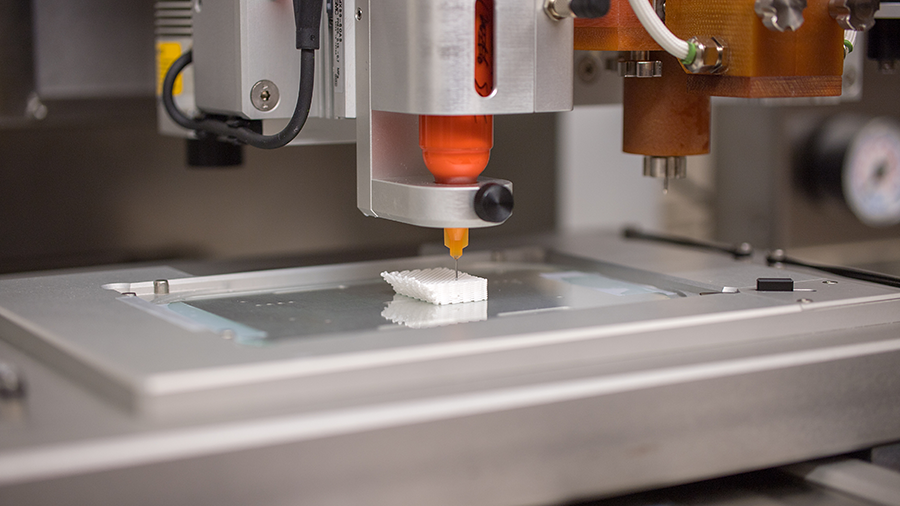Examining the state of the art in bioinks for future Biofabrication regenerative therapies
Review about the printability of bioinks

3D bioprinting is a biofabrication technique characterized by a layer by layer deposition of a biomaterial and cells to fabricate an implant and tissue engineered construct for the regeneration of organs. Bioinks are the biomaterials amenable to this manufacturing process, which may or may not contain cells. These bioinks require complex optimization in order to develop truly regenerative patient specific implants.
A thematic review about the printability of bioinks in 3D bioprinting has been published in Chemical Reviews (IF 52.7) by the AO Research Institute Davos and the Department of Orthopaedics at the University Medical Center Utrecht (The Netherlands), partners of the osteochondral collaborative research consortium funded by the AO Foundation.
The review provides a comprehensive overview of methodologies and approaches on how to assess printability and printing accuracy of bioinks in 3D bioprinting. To date, the term "printability" has been used in an intuitive way, lacking a consensus-based understanding of the chemical and viscoelastic (rheological) parameters needed to validate a print as "good" or "poor". In the review, methodologies and approaches used in the field to assess printability are described, including viscoelastic (rheological) properties of the ink, filament formation and extrudability (extrusion printing), and how well the shape is retained, are compared between extrusion and lithography-based bioprinting technique.
While the methodologies discussed are rather subjective and intuitive, the field is lacking an automated analysis system allowing for online quality control of the resolution, geometry and possible defects in the printed construct. Such advanced tools will be necessary to move the field of biofabrication towards clinical application. This review will help shape the future field of clinical biofabrication.
Read the article here.

